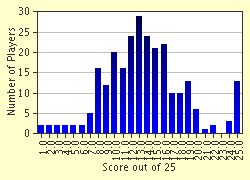Quiz Answer Key and Fun Facts
1. The year is 1805. England's last war ended in 1802. She's been at war with France again since May 1803. George III is King. You never planned on being a sailor, yet here you are, a member of the crew aboard HMS Victory. You didn't volunteer, you were ____?
2. Like it or not, you're "a blue in the Andrew" now. What does this mean?
3. So this is the Victory? You say she is the fastest sailing three decker of her day? Launched in 1765 at a cost of HOW MUCH?
4. The facts and figures question ... 226.5 feet long, hull 2 feet thick and main mast over 20 stories high at the waterline, 3500 tonnage displacement, 26 miles of rigging, 37 sails and another 23 spare sails for 6,510 square yards of sails, 104 cannons, (21 Oct. 1805) ...ENOUGH ALREADY! ... Approximately 6,000 trees were used to make the Victory. That's how many acres of woodland?
5. You've just been brought before the First Lieutenant and Boatswain. You've been asked questions to determine your seamanship skills. Everyone realizes you don't know a thing about the sea. Which of these names doesn't apply to you?
6. Let's get to know your shipmates. Who is the Captain of the HMS Victory in 1805?
7. Including Vice-Admiral Nelson, how many souls make up the crew of HMS Victory in Oct. 1805?
8. Okay, now you've gotta name ALL the crew ... alphabetically ... Hmmmm, I see that's caused quite a bit of grumblin' out there. Okay then ... How old was the youngest crew member aboard HMS Victory in Oct. 1805?
9. How old was the oldest crew member aboard HMS Victory in Oct. 1805?
10. "What's he talkin' about?"...Which of these is NOT a command that the Sub-Lieutenant would give to a Junior Midshipman?
11. Careful ... Let's see if I can trick you. How many decks did the "3 decker" HMS Victory have?
12. Let's see how HMS Victory stacks up against some other Men-O-War. Which of these was the largest warship, (measured by the number of cannons it carried and overall dimensions)?
13. Who aboard was usually nicknamed "Slushy"?
14. What caused the most loss of life on a Man-O-War in 1805?
15. What were "bargemen"?
16. "Avast!" - Which of these does not mean "avast"? Good for you if you know this one.
17. The newest officer or midshipman had to propose a specific toast that changed with each day of the week. If he forgot the toast he was to buy drinks for all those present. What was Tuesday's toast?
18. "Ship of fools" - sailors of this time had a relatively higher rate of lunacy than the civilian population.
19. "Every man for himself, mate". Which of these statements is false?
20. Any member of the crew that begged for mercy from the enemy during battle could be sentenced to death.
21. "Clang, clang, clang, clang, clang, clang" ... "six bells in the morning watch". What time is it?
22. When did the ship's day start?
23. The crew is all assembled on the quarterdeck. What`s up?
24. "Let the cat out of the bag"...."Room to swing a cat"....what`s a cat?
25. What did Vice Admiral Horatio Nelson lose at the Battle of Santa Cruz?
Source: Author
thumbsucker
This quiz was reviewed by FunTrivia editor
bloomsby before going online.
Any errors found in FunTrivia content are routinely corrected through our feedback system.

